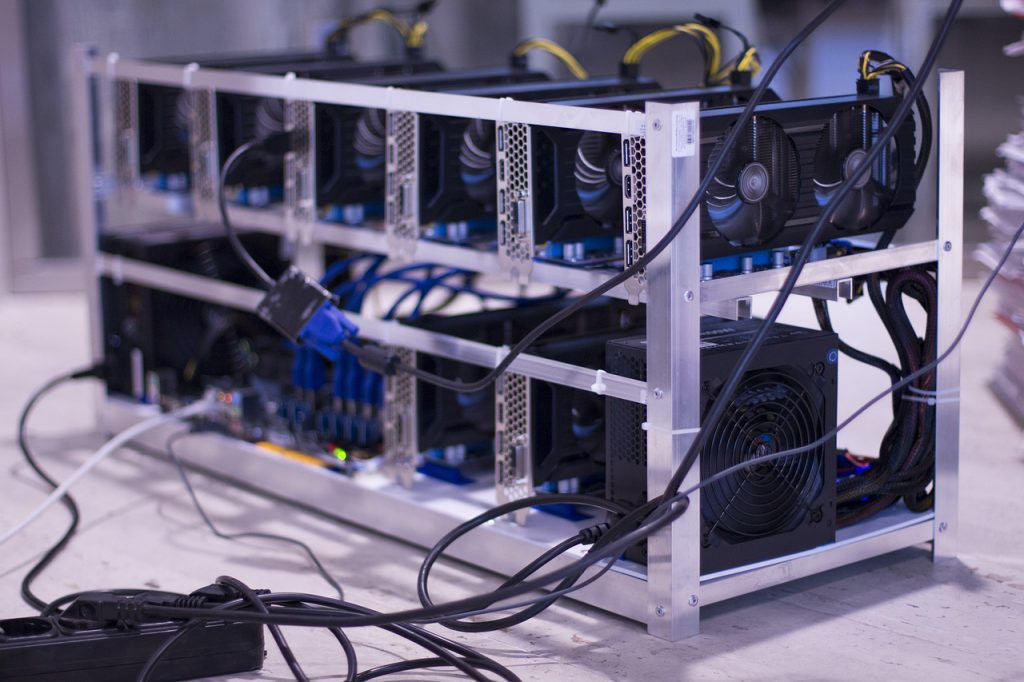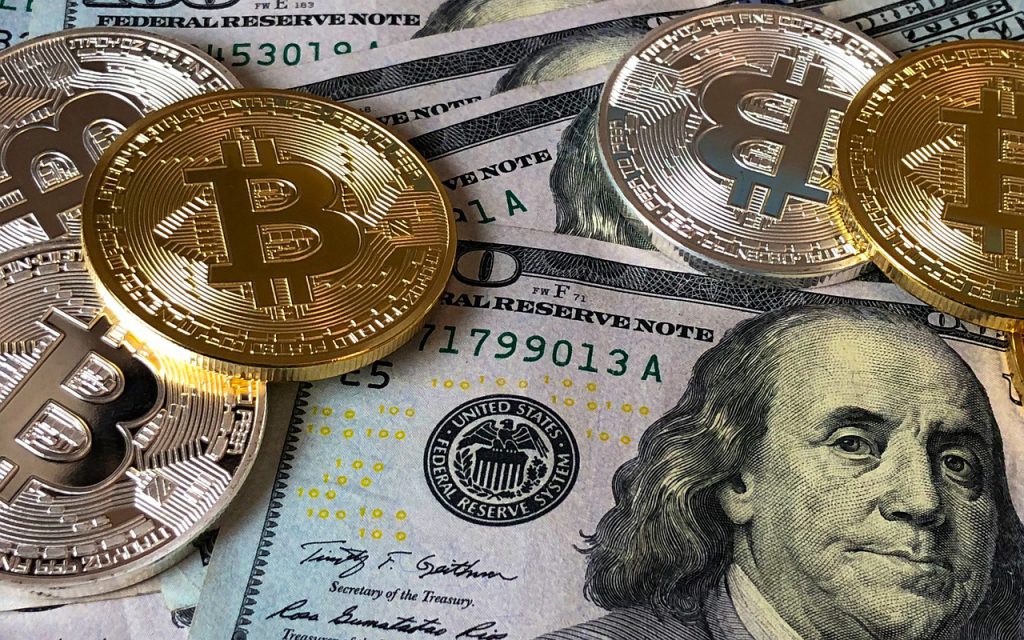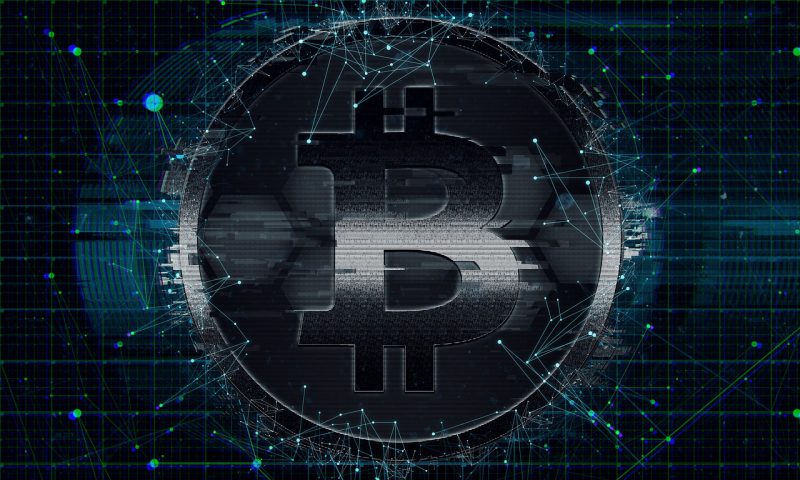Bitcoin has been one of the best investments in the last decade. It has seen over 9,000,000% ROI since it began trading in July of 2010. Everyone is hugely hyped about the prospect of owning some Bitcoin and being part of the digital revolution.
There are several ways to acquire BTC. For example, you can buy it on Centralized Exchanges (CEXs) like Binance, FTX and Huobi. You can also acquire Bitcoin through mining.
What is Bitcoin Mining?
Bitcoin mining, simply put, is the production or minting of new Bitcoins from previously encrypted blocks. The blocks have SHA-256 encryption, which miners compete to solve. The first miner to provide a solution gets the block reward. Presently, the reward per block is approximately 6.25 BTC.
This was not always the case. In the first four years of BTC mining, the block reward was 50 BTC. Bitcoin, coded in C++ programming language, was programmed to undergo a block reward halving every four years. Hence, after the first four years (i.e. in 2012), BTC underwent a halving event, which reduced the block reward from 50 BTC to 25 BTC. Since its inception, BTC has had three block reward halving. The latest halving occurred in May 2020 and saw the BTC block reward slashed from 12.5 BTC to 6.25 BTC.
So How Does Bitcoin Mining Occur?
Mining Bitcoin can be done in two ways: Solo or through a mining pool.
- Solo/Individual Mining
In this form of BTC mining, a single entity (person or organization) takes up the entire cost of buying mining rigs and the electricity bills associated with the operation. In most cases, such entities are governments and billion-dollar corporations like investment funds, banks or private companies. Sometimes it will be billionaires like Elon Musk.
- Corporate/Cloud Mining (Mining through a pool)
In this form of mining, small-scale miners, i.e., miners who cannot bear the electricity costs and/or the cost of the mining rigs, combine their small computational powers to make one big pool. When such a pool successfully mines a block, the rewards are fairly divided among the pool members according to the amount of computational power (i.e., hashing power) contributed.
Examples of such mining pools include F2Pool, Antpool and Poolin. These are also the largest Bitcoin mining pools in the world. Since buying BTC on exchanges is the easier way to go, we shall explore the prospect of mining BTC, step by step.
So How Do You Actually Mine Bitcoin?
Step 1: Buy Bitcoin Mining Equipment


Bitcoin miners are mainly GPUs or ASICs, as explained previously. They are commonly referred to as mining ‘rigs’ in the crypto space. You can find the best deals on Kryptex, one of the leading mining GPUs vendors. They will also help you to choose the best mining rig based on several factors. For example, they might consider profitability, energy consumption and hash power, and of course, the price. The amount of GPUs needed depends on your financial capability.
Step 2: Download Bitcoin Mining Software
The mining rigs are useless on their own; just a computer is useless without an Operating system. There are several mining softwares on the internet that can get the job done. According to The Balance, in ascending order of excellence, the best mining software in 2021 include CGMiner, BFGMiner, Easyminer and Awesome Miner.
At this point, we have to split the steps into two groups: Those who want to mine individually and those who wish to join a mining pool.
For Individual Mining:
Step 3: Fire Up your Mining Rig and Begin Mining
The mining software enables you to connect to the blockchain network. The GPUs then kick in and provide the needed computing power.
NB: Individual mining can be very disadvantageous since you are competing with mining pools that potentially contain millions of combined hashing power (H/s).
For Mining Pools:
Step 3: Search for and Join a Good Bitcoin Mining Pool
BTC mining pools contain hundreds, if not thousands, of miners. The largest BTC mining pool, Antpool, has a total of 24.63 EH/s. This is a colossal amount. When you join such a pool, you will be rewarded proportionally according to the amount of H/s your mining rig contributes to the pool. The operator of the pool, Antpool, in this case, takes a certain percentage as the fee for their services, making the end reward slightly lower than the expected amount. The advantage of using mining pools is the consistency and frequency of receiving block rewards.
Step 4: Start Mining
Once you are comfortable with the chosen pool, you are now ready to start mining. The only thing needed is to connect the mining rig to a power outlet, connect to the network and begin mining. The mining software you choose will do everything for you from this step.
NB: You need a Bitcoin wallet, where you will be receiving the Bitcoin block rewards.
If you don’t own a Bitcoin wallet, here are the steps to create one quickly.
Step 1: Head over to the Blockchain website and sign up for a wallet.
Step 2: Fill in your details (Email and Password) and click on “Create Wallet“
Step 3: Head over to your email and confirm it for verification.
Step 4: Congratulations! You now own a Bitcoin wallet.
What are the Limitations and Advantages of Bitcoin Mining?
Limitations
Bitcoin mining is highly profitable, but there are some limitations to it.
The main challenge is Bitcoin’s high electricity consumption. Electricity is mainly generated from burning fossil fuels. According to the World Nuclear Association (WNA), 64.5% of the global electricity consumption is generated from burning fossil fuels. This is because they are cheap to build and produce electricity over long periods.
Environmentalists have raised concerns about the impact of burning fossil fuels on the environment. The WNA has said that despite the financial benefits of fossil fuel-based electricity, they produce large amounts of carbon dioxide (CO2), which negatively impacts the climate.
Aside from this, the high electricity consumption can take a tremendous toll on your pocket. In Riverhead, New York, a man is currently facing a possible 15-year jail term for mining BTC in a government building. With over 40 mining rigs connected to the building’s power outlet, Christopher Naples racked up $6000 in electric bills in just the first week of September alone. This is how expensive bitcoin mining can be.
Bitcoin mining is simple yet arduous. Apart from the high electricity consumption, the mining rigs are also expensive. The demand for these machines has driven the supply down in the market. Manufacturers hence took the opportunity to raise the prices of these mining machines. Ranging from $290 to $2,600, Tom’s Hardware takes time to look at the various mining performances, daily profit and price of different BTC mining hardware.
The bottom line is, the cheaper the miner, the less profitable it is.
Advantages
The main advantage of mining BTC is the handsome monetary reward once you get the scarce digital coins in your wallet. Currently, 1 BTC goes for $46,087, and many analysts have called for a $100,000 BTC by the end of 2021, which is only three months away. As of September 14, 2021, mining BTC is considered profitable. As the difficulty of mining increases, the price of BTC also increases to incentivize the miners to continue mining.
In the creation of Bitcoin, Satoshi programmed it to only ever have 33 halvings. However, it is estimated that by 2040 mining BTC will be unprofitable. The reward per block will be too small, and the BTC price will not be high enough to incentivize miners to continue mining.
Hence, the block rewards are the greatest and perhaps the only advantage of BTC mining.
So, How Much Can You Earn from BTC mining?


First of all, the fact is that mining Bitcoin is profitable. This is the bottom line. While solo Bitcoin miners may struggle to make a living from their venture, those who join a Bitcoin mining pool are more likely to make nice returns.
The profitability of BTC mining relies on several factors such as cheap electricity, efficient hardware, reliable mining pools, and the amount of fees from selling BTC. For the sake of a figure to go with, using a Bitcoin Profitability Calculator, we will make a general calculation to estimate the BTC mining profitability.
One high-end ASIC Miner, like the AvalonMiner 1246, can have a hash power of 90.0 TH/s. The miner consumes a total of 3420 Watts per day. Given that the average cost of electricity in the United States is $0.1042 per kilowatt-hour, 1 ASIC miner would give you a profit of $6.61 per day. Assuming you have 46 of these, like Mr Naples, you will make $304.06 per day.
That was a general calculation based on the general specifications of the AvalonMiner 1246. The numbers will change depending on the type of miner you purchase, the cost of electricity in your state or country, and the current price of BTC at the time of mining.
The State of Bitcoin’s Adoption and Its Impact on BTC Mining


Throughout 2021, BTC has received a lot of support from multinational enterprises such as Tesla. Also, governments have started taking a keen interest in Bitcoin. Recently El Salvador made Bitcoin a legal tender in their economy. This means local retail shops across the country can now accept BTC as money.
About a week later, Ukraine began looking into the possibility of making BTC a legal tender too. This whole development happens as MicroStrategy makes another new purchase of 5,050 BTC worth $242 million.
Also, according to Ecoinometrics, Bulgaria holds over 215,000 BTC. Ukraine and El Salvador follow closely behind. Bulgaria might be next to make Bitcoin legal money in their nation with the way things are going.
MicroStrategy holds over 100,000 BTC in its reserves. The latest purchase drove its BTC coffers to an all-time high of 114 000 BTC, worth over $3.2 billion.
How Adoption of Bitcoin Affects Bitcoin Mining
With such a rapid adoption rate in just one year, it is sufficient to say that Bitcoin mining will be as profitable as never before. In just a week, BTC demand rose as over 6 million people in El Salvador got exposure to it. When Ukraine finally legalizes BTC, the demand will hit new all-time highs.
However, the rate of BTC production has not changed. There are only 900 new Bitcoins introduced into the market daily. This was the number since the halving in May 2020. Since the demand is way above the supply, the price of BTC must rise to match the demand.
Clearly, Bitcoin adoption is advantageous for its mining. Miners will reap from the increased fees due to the increased number of transactions on the chain. At the same time, they will get to sell BTC at ridiculously high prices.
Analysts from Wallet Investor predict that BTC will have a price of $194,150 in the next five years. However, given the current rate of adoption, this prediction is heavily conservative. Bolder predictions, like that of Chico Crypto from Blockchain Leaks, have set BTC at $100,000 by the end of 2021.
Final Thoughts
The current situation may improve in the future with the introduction of more efficient and less costly hardware solutions. This will enable miners to make more money even though the returns are diminishing. Home miners are unlikely to make any money from mining. If they can, re-entry to the network would greatly increase decentralization and support Satoshi Nakamoto‘s original intentions.
According to Elon Musk, cryptocurrency has a promising future, but it cannot be used for great environmental harm. In July 2018, he said that the company would not sell Bitcoin as long as mining operations are still profitable. However, Mr. Musk has been building a large solar-energy harvesting plant in Texas. Knowing Mr. Musk, this might just be a marketing plan to push his alternative energy source to Bitcoin miners. However, time will tell what the future of Bitcoin mining holds.





